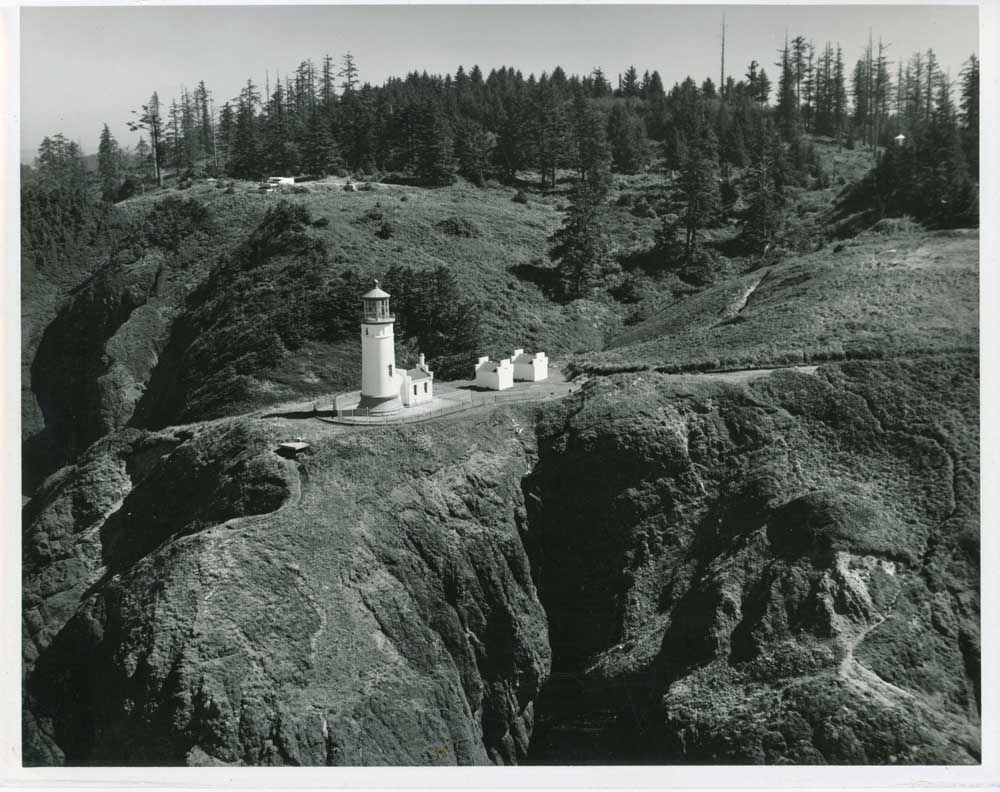Weekend Break: Lighting the path
Published 1:00 pm Friday, February 24, 2023

- An aerial view of North Head Lighthouse at Cape Disappointment State Park.
The mouth of the Columbia River is home to a fascinating history of lighthouses that have safeguarded mariners for more than a century.
North Head Lighthouse, officially put into service on May 16, 1898, was the second lighthouse constructed on the Long Beach Peninsula.
Although Cape Disappointment Lighthouse had been installed in 1856, it was difficult for sailors approaching from the north to see the light.
In 1889, the United States Lighthouse Board established that “The present light at Cape Disappointment is inadequate for the purposes of commerce and navigation. It is believed that if North Head is marked by a first-order light … that the Pacific coast will be well-supplied with lights of the first order from Cape Flattery to Tillamook Rock.”
Construction of North Head Lighthouse began in 1896 at a cost that “should not exceed” $50,000. Originally designed by Carl W. Leick, the lighthouse tower is 65 feet high and is positioned on a 130-foot cliff.
The larger North Head campus includes a lighthouse tower and oil houses on the headland, as well as a lighthouse keeper’s residence, duplex for assistant keepers and outbuildings farther inland.
Cape Disappointment’s first-order Fresnel lens was disassembled and brought to North Head. This enormous lens produced a light that could be seen up to 20 miles out at sea and burned five gallons of kerosene in a night.
Given that Cape Disappointment Lighthouse and North Head Lighthouse would be positioned so close to each other, it was crucial that the towers have different signatures, or light patterns, that mariners could identify them by.
North Head’s tower took on a “fixed-white” signature, while Cape Disappointment adopted alternating red-and-white flashes.
North Head Lighthouse operated with its first-order Fresnel lens through 1935. The lens was then retired and replaced by a smaller, fourth-order lens. Though neither Fresnel lens currently resides in the lighthouse tower, both can be viewed at local historical organizations.
The original first-order Fresnel lens is on display at the Lewis and Clark Interpretive Center at Cape Disappointment State Park. Its fourth-order successor was replaced by aero beacons in the 1950s and is currently on display at the Columbia River Maritime Museum.
After more than 60 years with a lighthouse keeper safeguarding its tower, North Head was automated in 1961. The light would be consistently maintained, but the majority of its quarters were not.
Exposed to the elements and without the care its keepers provided, the lighthouse began to deteriorate.
The U.S. Coast Guard began renovation of the lighthouse and its grounds in the 1980s, but more recent restoration work began after Washington State Parks officially took ownership of the tower from the Coast Guard in 2012.
Significant work has been done to restore the lighthouse to its original appearance from 1898.
Today, visitors can find North Head in Cape Disappointment State Park surrounded by beaches, overlooks and miles of walking and biking trails. The lighthouse keepers’ residences are still intact and are available as a vacation rental, reserved through Washington State Parks.





